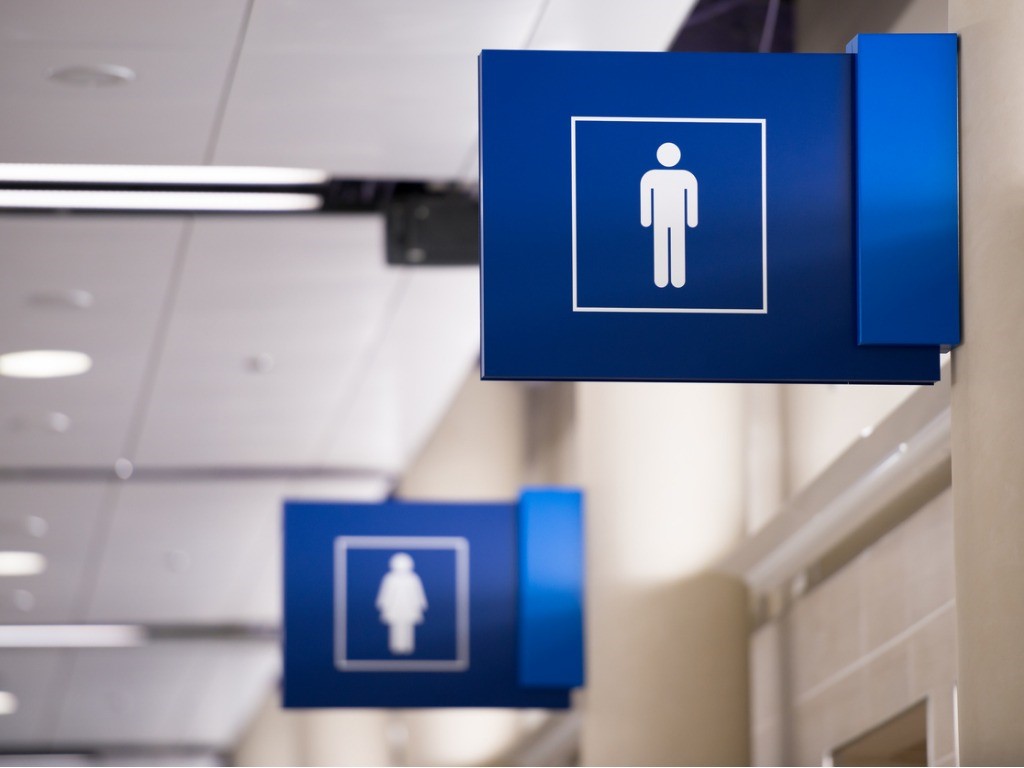Side Effects of Overactive Bladder Medication

The Bottom Line
Overactive bladder (OAB) is a condition that causes a sudden urge to urinate. OAB can be managed through behavioral techniques and medications. However, many people experience side effects, such as dry mouth, even at therapeutic doses.

The Full Story
Overactive bladder (OAB) is a condition with bothersome urinary symptoms including an increased need to urinate (urgency), increased frequency of urination, getting up at night to urinate, or involuntary urination. The key symptom of OAB is urinary urgency, which is defined by the American Urological Association (AUA) as "a sudden compelling desire to urinate that is difficult to defer." This should not be confused with a strong desire to urinate when the bladder is full. It is considered normal to urinate up to seven times during waking hours. The frequency of urination varies based on hours of sleep, fluid intake, and multiple medical conditions. Nocturia is the interruption of sleep one or more times during the night because of the need to urinate. Involuntary urination, also known as urgency urine incontinence, is involuntary leakage of urine.
According to the AUA, OAB occurs in 7-27% of men and 9-43% of women. Many factors can increase the risk of developing OAB such as advanced age, diabetes, smoking, obesity, and gender. Men have a higher probability of developing "overactive bladder syndrome dry," or urgency without urinary leakage, while women develop urgency urine incontinence consistently more than men. For women, the occurrence of OAB usually peaks around the age of menopause. Younger women who have given birth vaginally can also experience stress incontinence. Studies have shown that OAB can reduce the number of social and personal activities, cause psychological distress, and decrease the quality of life.
During the diagnosis of OAB, it is important to rule out other disorders that could be causing similar symptoms. Healthcare providers will take a careful history, conduct a physical exam, and request a urine sample. They will ask about medications that can cause incontinence such as angiotensin-converting enzyme (ACE) inhibitors, calcium channel blockers, and diuretics, all of which are common medications used to control high blood pressure.
Patients should have a realistic goal for treatment and an understanding of the risks versus benefits of particular treatments. There is no single best treatment. Most treatments can improve symptoms, but no available treatment will completely eliminate all symptoms of OAB.
Behavioral interventions are non-invasive, essentially have no risk to patients, and should be the first treatment for OAB. Interventions include lifestyle changes, bladder training, and pelvic floor training. Lifestyle interventions include awareness of fluid intake, smoking cessation, dietary alteration (such as reducing caffeine intake), weight loss, and keeping a bladder diary. Bladder training consists of learning urgency suppression strategies such as using relaxation and distraction techniques, self-monitoring, and use of reinforcement techniques. Regular tightening of the pelvic floor muscle (Kegel exercises) can be beneficial. Patients participating in behavioral interventions typically experience 50-80% reduction in the frequency of involuntary urination.
Drug therapy can be considered in patients with OAB symptoms that are not adequately controlled by behavioral interventions. Antimuscarinic drugs target receptors in the bladder and suppress premature contractions, thereby enhancing bladder storage. There are multiple antimuscarinic drugs and formulations available. For instance, oxybutynin comes in immediate-release (Ditropan) and extended-release (Ditropan XL) tablets, a patch (Oxytrol), and a topical gel (Gelnique). The immediate-release formulation is the oldest and least expensive option, but it causes substantial side effects; the extended-release formulation is often tried first. Because the patch releases oxybutynin through the skin, it has a more tolerable side effect profile compared to medications taken by mouth. Some antimuscarinics such as tolterodine (Detrol or Detrol LA) should not be taken by people with liver or kidney disease. Other medications like solifenacin (VESIcare) should not be taken by those who are on certain medications because of drug interactions.
Antimuscarinic medications' side effects include dry mouth, constipation, dry or itchy eyes, blurred vision, indigestion, urinary tract infection, urinary retention, and drowsiness. Rarely, people experience life-threatening symptoms such as irregular heart rhythms. Caution should be taken when starting antimuscarinic therapy in older adults with mild cognitive impairment or dementia as these drugs might worsen symptoms. Antimuscarinics should not be used in patients with glaucoma.
Although antimuscarinics are used to treat children with OAB, as little as one oxybutynin tablet taken by a child, or extra doses in adults or children, can cause symptoms requiring medical evaluation. In severe toxicity, the concern is the effect antimuscarinics can have on the heart and nervous system. Severe effects include heart rhythm changes, hallucinations, seizures, and coma.
Mirabegron (Myrbetriq), is a beta-3-adrenergic agonist that works in OAB by increasing bladder capacity through relaxing the bladder muscles. The most commonly reported side effects associated with mirabegron are high blood pressure, urinary tract infection, and headaches. It should be avoided in patients who have kidney or liver disease or uncontrolled high blood pressure. Mirabegron works about as well as the antimuscarinic agents but with lower rates of dry mouth and constipation. However, it can cause rare effects such as heart palpitations, rash, abdominal pain, diarrhea, and constipation.
If you have questions about an adverse reaction or possible overdose of a drug used for OAB, immediately check the webPOISONCONTROL® online tool or call Poison Control at 1-800-222-1222 for help 24 hours a day, every day.
Diana N. Pei, PharmD
Certified Specialist in Poison Information
Poisoned?
Call 1-800-222-1222 or
Prevention Tips
- Keep prescription and over-the-counter medications in child-resistant containers, out of the sight and reach of children and pets.
- Ask your doctor and pharmacist to review your medication list for possible drug interactions before taking any medication for OAB. Be sure to mention herbals and dietary supplements in addition to all over-the-counter and prescription medicines.
- Patients on OAB drug therapy frequently experience side effects. Report any side effects at each visit to a healthcare provider.
This Really Happened
Case 1. A 7-year-old boy was given two doses of liquid oxybutynin 2 hours apart instead of 12 hours. He began to hallucinate and saw bugs and flies in the room. Poison Control directed the family to take the boy to an emergency room for evaluation and observation. The hallucinations resolved by the next day.
Case 2. A 10-year-old boy was supposed to take oxybutynin 5 mg three times a day but had been mistakenly given 10 mg three times a day for 3 months. Although he became increasingly drowsy, he continued to go to school every day. His only other complaint was increased thirst. The mistake was discovered during a prescription refill. Poison Control recommended that he be evaluated and observed in an emergency room for any additional symptoms. He was discharged home after a few hours of observation.
Case 3. A 78-year-old woman unintentionally took her mirabegron twice in the morning and experienced heart palpitations in the afternoon. By the time she called Poison Control that evening, her symptoms had resolved.
For More Information
What is overactive bladder (OAB)? Linthicum MD. Urology Care Foundation [accessed Feb 26, 2018].
References
Chang HJ, Lynm C, Glass RM. Urinary incontinence in older women. JAMA 2010;303:2208.
Poisoned?
Call 1-800-222-1222 or
Prevention Tips
- Keep prescription and over-the-counter medications in child-resistant containers, out of the sight and reach of children and pets.
- Ask your doctor and pharmacist to review your medication list for possible drug interactions before taking any medication for OAB. Be sure to mention herbals and dietary supplements in addition to all over-the-counter and prescription medicines.
- Patients on OAB drug therapy frequently experience side effects. Report any side effects at each visit to a healthcare provider.
This Really Happened
Case 1. A 7-year-old boy was given two doses of liquid oxybutynin 2 hours apart instead of 12 hours. He began to hallucinate and saw bugs and flies in the room. Poison Control directed the family to take the boy to an emergency room for evaluation and observation. The hallucinations resolved by the next day.
Case 2. A 10-year-old boy was supposed to take oxybutynin 5 mg three times a day but had been mistakenly given 10 mg three times a day for 3 months. Although he became increasingly drowsy, he continued to go to school every day. His only other complaint was increased thirst. The mistake was discovered during a prescription refill. Poison Control recommended that he be evaluated and observed in an emergency room for any additional symptoms. He was discharged home after a few hours of observation.
Case 3. A 78-year-old woman unintentionally took her mirabegron twice in the morning and experienced heart palpitations in the afternoon. By the time she called Poison Control that evening, her symptoms had resolved.
